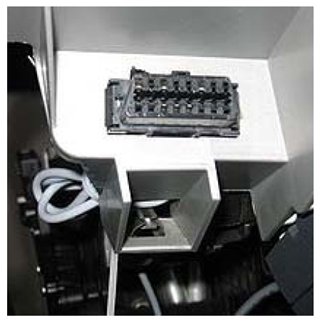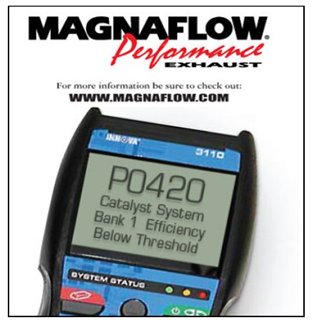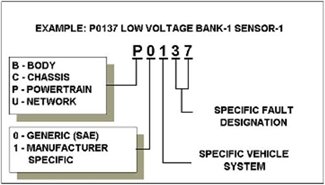
On Board Diagnostics
Technical Bulletin
SUBJECT/Summary: On Board Diagnostics (OBD) is a standardized data link connector and set of test signals that technicians use to retrieve defined Diagnostic Trouble Codes (DTCs). OBD II, implemented in 1996, is the second generation of diagnostics data stream retrieval; it was developed to address the need for more stringent tail pipe emissions.
PROBLEM: For the technician, the OBD system is a window into the entire vehicle and all its sub-systems. In this bulletin we will focus on Engine Management, but it is important to realize that many vehicle functions are interrelated and that communication among all the modules (computers) on the car is continuous. This bulletin will focus on Codes. Coming bulletins will discuss Freeze Frame, Data Stream and Monitors and their functions, benefits and liabilities.


SOLUTION: Diagnostic Trouble Codes
When the Powertrain Control Module (PCM) senses a fault in a system or component, it alerts the driver by illuminating the Malfunction Indicator Light (MIL) and setting or recording a code. This information can be retrieved from the PCM with a scan tool connected to the Data Link Connector (DLC). The most important thing to keep in mind is that this is not the end of the diagnostic process, only the beginning. Many techs mistakenly believe that replacing a component identified in a trouble code is all that is needed to repair the vehicle. The PCM doesn't know WHY there is a problem - it just relays the information that the signal from a particular component wasn't what it expected. Any number of factors can lead to an apparent failure, and if the tech does not eliminate all the possibilities, it's a good bet that this car will be back in the bay for the same fault soon. Knowing what can cause a sensor to "miss-report" goes a long way toward helping the technician to make a successful repair. Skills such as information acquisition and reading wiring diagrams and flow charts can be learned and applied on a daily basis.

OBD II introduced a standard for code display that gives us some useful information right away. For example, a P0420 code would break down like this:
- P = Powertrain
- 0 = Generic code
- 4 = Emissions
- 20 = Catalyst Efficiency Bank One
Each code is more defined than its OBD I predecessor, and now there can be many codes describing a specific fault for the same component. For example, prior to OBD II the average system could display about three codes for Oxygen Sensor failure. Now we could get as many as 36 or more fault codes for an O2 sensor that would more closely define what the fault was. It is important also to realize that there are different types of codes available, but first we must understand the criteria that the PCM uses to display a fault.
Typically we are concerned with two different types of codes, Type "A" and Type "B." Type "A" codes illuminate the MIL immediately upon detection of a fault. Type "B" codes occur only when the PCM detects a fault in two consecutive drive cycles. The PCM will turn on the MIL and set a code. A drive cycle consists of starting the vehicle and driving it until it acquires Closed Loop operation and all necessary criteria are met. At this point the PCM will continue to monitor the system, and if NO FAULTS are found in three consecutive drive cycles, it will turn the light off and store the code in history. There is a third scenario, in which the PCM may detect a Type "B" fault on one drive cycle but not in a second, consecutive one. In this case it can set a Pending code but not illuminate the MIL.
All these scenarios create a situation in which the technician must dig a little deeper to get all the information needed to move forward. When checking for codes, it's important look at Current Codes (light on now), History Codes (light was on) and Pending Codes (light was never on). In the coming months we will dig deeper into OBD to learn exactly what information is at our fingertips to help us get these vehicles repaired correctly the "first time."
Product Number:
Manufacturer: MagnaFlow
Bulletin Date: 11/25/2009
Bulletin Number: 09-0112
Departments
Towing
- Trailer Hitch
- Fifth Wheel
- Gooseneck
- Towing a Vehicle
- Front Hitch
- RV Hitch
- ATV Hitch
- HD Truck Hitch
- Vehicle Wiring
- Brake Controller
- Ball Mounts
- Weight Distribution
Sports and Recreation
Trailer Parts
- Utility Trailer
- Boat Trailer
- Landscape Trailer
- Enclosed Trailer
- 5th/Camper Trailer
- Car Hauler
- Horse Trailer
Vehicle
Contact & Help

Popular Vehicles
- Subaru Forester
- Ford F-350 Super Duty
- Ford F-250 Super Duty
- Chevrolet Silverado 1500
- Jeep Wrangler Unlimited
- Jeep Wrangler
- Ram 3500
- Toyota Highlander
- Ram 2500
- Chevrolet Silverado 2500
- Subaru Outback Wagon
- Chevrolet Silverado
- Dodge Ram Pickup
- GMC Sierra 2500
- Ram 1500
- Ford F-250 and F-350 Super Duty
- Jeep Grand Cherokee
- Toyota Tacoma
- GMC Sierra 3500
- Toyota Tundra
- Ford Escape
- More >>

